
Some great ideas in here!
- Subject:
- Education
- Material Type:
- Teaching/Learning Strategy
- Author:
- PBS
- Date Added:
- 02/12/2019

Some great ideas in here!

Students choose a novel that is appropriate to their reading level (teacher-approved). They read it in ELA/during DEAR time. I set a date that they needed to be finished reading by so they could estimate where they needed to be at by the end of each week. When they finished reading, they used Bristol board to create a “puzzle” for their novel. Each piece of the puzzle contained a written description of information. On the opposite side, students draw a different cover for their novel that shows an important event or setting. You can upload the picture to a website to create it as an online puzzle for friends to complete! After, I had them cut the actual Bristol board into the 6 puzzle shapes, as you can see in the examples I included on the subsequent pages.
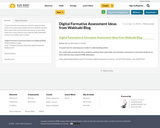
17 great tools for assessing your student's understanding online!
You could easily provide this list to students and have them select their own formative assessment or have them build one to share with the class using the PeBL philosophy.
Author: by Lee Watanabe-Crockett
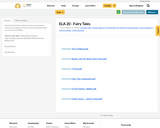
Fairy tale lesson that incorporates choice into the lesson, content, and assignment. Users can easily customize to their own interests and abilities.

This assignment provides students with choice regarding Edgar Allan Poe poetry assignments.
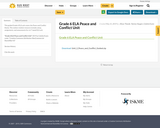
This guided Grade 6 ELA unit covers the Peace and Conflict theme. This station rotation resource includes setup, assignments, and assessments for a 6-7 week ELA unit.
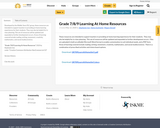
Developed by the Middle Years PLC group, these resources are intended to support teachers in providing at-home learning experiences for their students. They may also be helpful for in-class planning. This set of resources will be updated and expanded as further development occurs. Areas of learning covered include reading, writing, movement, creativity, mathematics, and social studies/science.
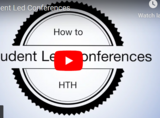
"Have you been thinking SLCs sounded like a good idea but you were afraid of screwing them up? OR have you been doing them for years but never really felt like you were doing them “right”? This article by veteran teacher Kelly Williams has you covered."
How to : plan and prepare, schedule, decide a structure, decide roles and what to share. This resource includes a sample parent letter.

This lesson is specifically designed for chapter 4 of The Hunger Games. The students fill in the Choice Map collectively to look at a way to contribute to their communities. After they complete their map, they can write about the experience in order to reflect upon it.

Ditch That Textbook offer 4 videos to will support teachers in preparing students for a future in which they will be in control, by letting them practice having autonomy and choice.
VIDEO 1: EMPOWER STUDENTS WITH CLASSROOM VOTING
VIDEO 2: BUILD RELATIONSHIPS WITH CLASSROOM SURVEYS
VIDEO 3: INSTILL RESPONSIBILITY WITH CLASSROOM JOBS
VIDEO 4: CREATE AN "OUR CLASS, OUR VOICE" CLASSROOM" - AUTONOMY & VOICE

Sheena Iyengar studies how we make choices -- and how we feel about the choices we make. At TEDGlobal, she talks about both trivial choices (Coke v. Pepsi) and profound ones, and shares her groundbreaking research that has uncovered some surprising attitudes about our decisions. Sheena Iyengar studies how people choose (and what makes us think we're good at it). A quiz, thought provoking question, and links for further study are provided to create a lesson around the 24-minute video. Educators may use the platform to easily "Flip" or create their own lesson for use with their students of any age or level.

A recent blog by Grant Wiggins affirmed what I have long believed about creativity: it is a 21st-century skill we can teach and assess. Creativity fosters deeper learning, builds confidence and creates a student ready for college and career.
However, many teachers don't know how to implement the teaching and assessment of creativity in their classrooms. While we may have the tools to teach and assess content, creativity is another matter, especially if we want to be intentional about teaching it as a 21st-century skill. In a PBL project, some teachers focus on just one skill, while others focus on many. Here are some strategies educators can use tomorrow to get started teaching and assessing creativity -- just one more highly necessary skill in that 21st-century toolkit.